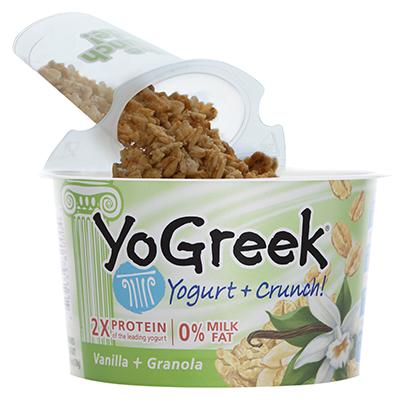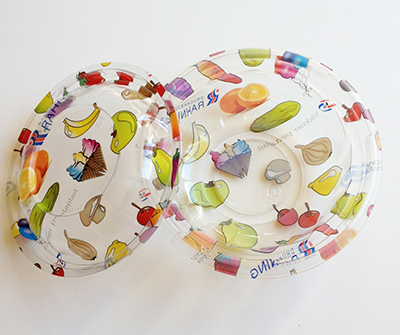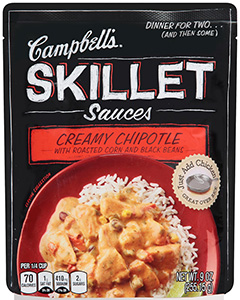Trends | The Future of Package Printing
- Published: July 18, 2013
Modern packaging goes far beyond its primary objective of protecting the contents within it. The fact is, it serves as a critical communication platform. Think of the ingredient and nutritional information it lists. How it displays expiration dates and tracking codes to ensure freshness and product safety. And how it projects the personality of a brand to help build connections with consumers.
What makes all of these functions work? Printing technologies. The wide range of printing technologies and processes exhibited at PACK EXPO International 2012 offered a clear view of advancements in this sector. It also lays a strong foundation for continued innovation in 2013, which brand owners can discover at PACK EXPO Las Vegas 2013 (September 23–25; Las Vegas Convention Center).
Graphics grow up
When it comes to package graphics, food and beverage manufacturers are increasingly turning to in-mold labeling (IML) to improve product visibility in a cost-effective manner. Europe was first to embrace this technology, which is now making inroads in the United States.
IML is a one-step package decorating method that integrates labeling directly into the forming process by essentially forming the container around the label and fusing the label to the resin. Regardless of the chemistry involved, IML often leads to a more durable container, and a resulting in a reduction in total resin. IML also offers recycling advantages over separately applied labels that often use adhesives.
Suppliers continue to innovate in this area, with some offering metallic, color-changing, and textured labels. Others offer uniquely shaped labels that boost product visibility when used with clear resin or can help reinforce brand image.

IML is not for every product, so suppliers continue to improve other resin container printing processes. For example, a computer-to-plate dry-offset printing process generates higher-definition graphics in bolder, truer colors that allows high quality photographic imagery to be applied to plastic food containers.
Additionally, a patent-pending printing technology allows for direct-to-plastic printing prior to thermoforming. The technology uses specialty heat-tolerant inks that dry instantly when applied to roll-fed plastics, yet remain malleable during forming. Eye-mark indexing ensures that the thermoforming step won’t distort or deform the graphics. This technology provides substantial cost savings, as it eliminates the need for label application. It works with all types of printing methods, allowing for high-definition, full-color printing.

Companies that produce small runs of product—particularly makers of local or handcrafted goods—typically prefer to print and apply labels. Continued growth among artisan companies that aim to evoke a premium look has prompted suppliers to refine tabletop label printers, making them faster, more versatile in the handling of different materials and ink formats, and ultimately enabling the production of high-resolution images.
Staying Flexible
Flexible package printing has come a long way, and has become more economical, thanks to advances in digital printing. Traditionally, most flexible packages were printed using the more expensive rotogravure process. Today, many printers offer flexographic printing options, and they are transforming the way flexible packaging is used. In fact, the Flexible Packaging Assn. (FPA) recently honored U.K. retailer Tesco with a Silver Award for printing achievements for the Tesco Finest Soups retort pouch. The pouch represents a marked departure from standard rotogravure-printed retort pouches: Its matte finish and styling have high shelf impact and replace the more traditional rigid formats for retort soups. Through engineering and technical expertise, the supplier was able to overcome the demands of the retort process without sacrificing print quality.

 Interest in flexographic technology is also growing in the States. For example, Campbell’s Soup used flexographic printing for the debut of its new Campbell’s Skillet Sauces line in an effort to move beyond its iconic can packaging and attract younger consumers.
Interest in flexographic technology is also growing in the States. For example, Campbell’s Soup used flexographic printing for the debut of its new Campbell’s Skillet Sauces line in an effort to move beyond its iconic can packaging and attract younger consumers.
Shrink sleeve suppliers also are staying competitive by getting creative with new printing and labeling options. Jose Cuervo Tradicional Tequila uses thermochromatic ink on its shrink sleeve labels to indicate optimum drinking conditions. The ink changes color in reaction to changes in temperature, and accordingly, as the liquid chills, the bottle’s tattoo-like skeleton and floral image becomes deeper and more striking. When the design is fully revealed the tequila is at optimal temperature for consumption.
Outermost package printing
Though contact coders and inkjet printers are often used in secondary and tertiary packaging applications, print and apply labels are at a unique advantage, as they are better suited to accommodate manufacturer’s emerging technologies for tracking and traceability. Many can now include radio-frequency identification (RFID) tags and they have improved printing resolution for quick-response (QR) codes.
In many of these systems, it is not the printing, per se, that is experiencing the upgrade; rather it is the printer’s overall operation and speed. For example, a new print-and-apply system has been designed with an intuitive user interface that simplifies maintenance, adds flexibility, and dramatically reduces downtime, improving the overall user experience. This print engine is ideal for box and pallet labeling in many industries including food and beverage, manufacturing and others.
A new RFID printer/encoder can print and encode small ultra-high frequency (UHF) RFID smart labels for applications such as asset management, as well as larger labels for traditional supply chain labeling. Optimized for high-volume RFID operations, the printer/encoder delivers superior flexibility and unique features that help lower cost per label and is fast and easy for the user.
Another innovation comes in the form of an all-electric corner-wrap label printer-applicator, a unit that saves energy by eliminating the use of compressed air. The unit prints labels in a next-out mode, automatically removes them from their liner and retains them by vacuum on an integrated swing arm-mounted pad. Unlike most conventional label printer-applicators, this system creates the vacuum with electrically operated fans instead of external compressed air, for reduced energy consumption.

As product manufacturers identify new ways for printing technology to improve marketing, distribution, and traceability, suppliers will respond with upgrades and new offerings. Brand owners, contract manufacturers, and package printers can count on PACK EXPO Las Vegas 2013 to be a resource for such technologies. Attendees interested in package printing solutions can also explore different material and container innovations in The Brand Zone and learn about trends at the Conference at PACK EXPO.
About PMMI
PMMI is a trade association of more than 600 member companies that manufacture packaging, processing, and related converting machinery in the US, Canada, or Mexico; machinery components and packaging containers and materials. Learn more at PMMI.org.




